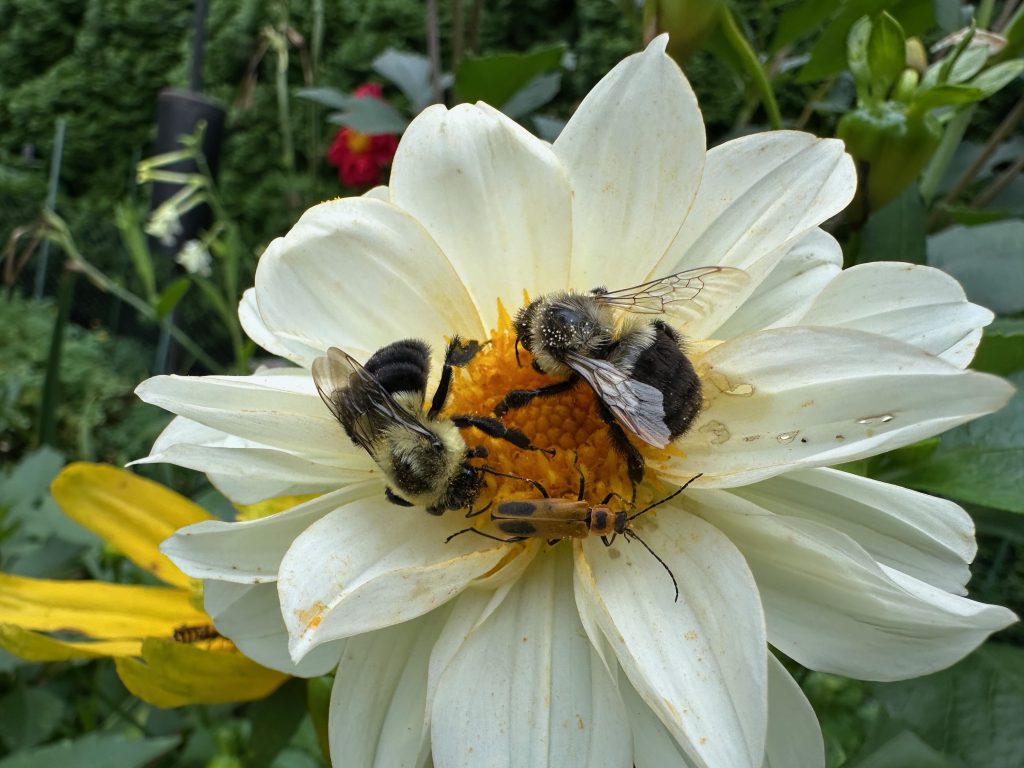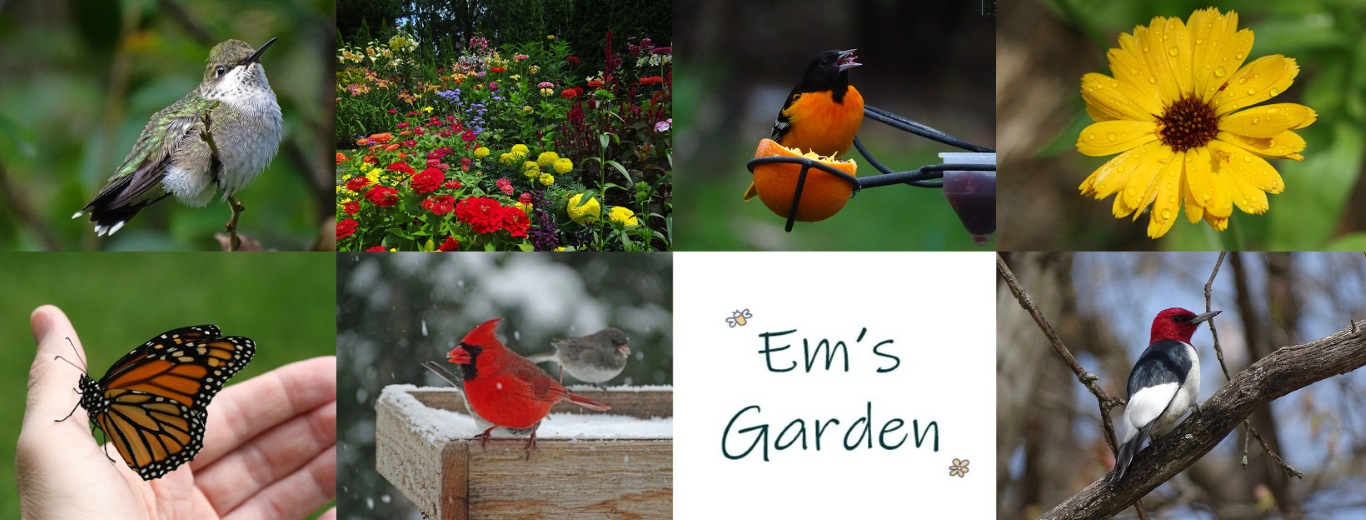I love that calendulas bloom well into fall. Their bright flowers add some pizazz to fading flowerbeds. And those late flowers are also beneficial for pollinators. But this year, my calendulas just weren’t having it.
Calendulas are cool-season annuals. They prefer high temperatures in the 60s and 70s (F). But September and much of October in southern Wisconsin featured many days with temperatures in the mid or upper 80s. When the thermometer stays that high, calendulas shift from producing flowers to conserving energy.
My plants still bloomed throughout the summer into fall, but those flowers were few and far between.
Southern Wisconsin is well past the average first frost date. In fact we’ve even surpassed the average first hard freeze date. This week we’ve finally had some frosty nights and it’s feeling more like fall. Calendulas can handle a little frost, but they are living on borrowed time.
I already mentioned bright-orange ‘Kinglet’ as one of the two cultivars I grew this year. That one seemed to handle the hot days just a little better.
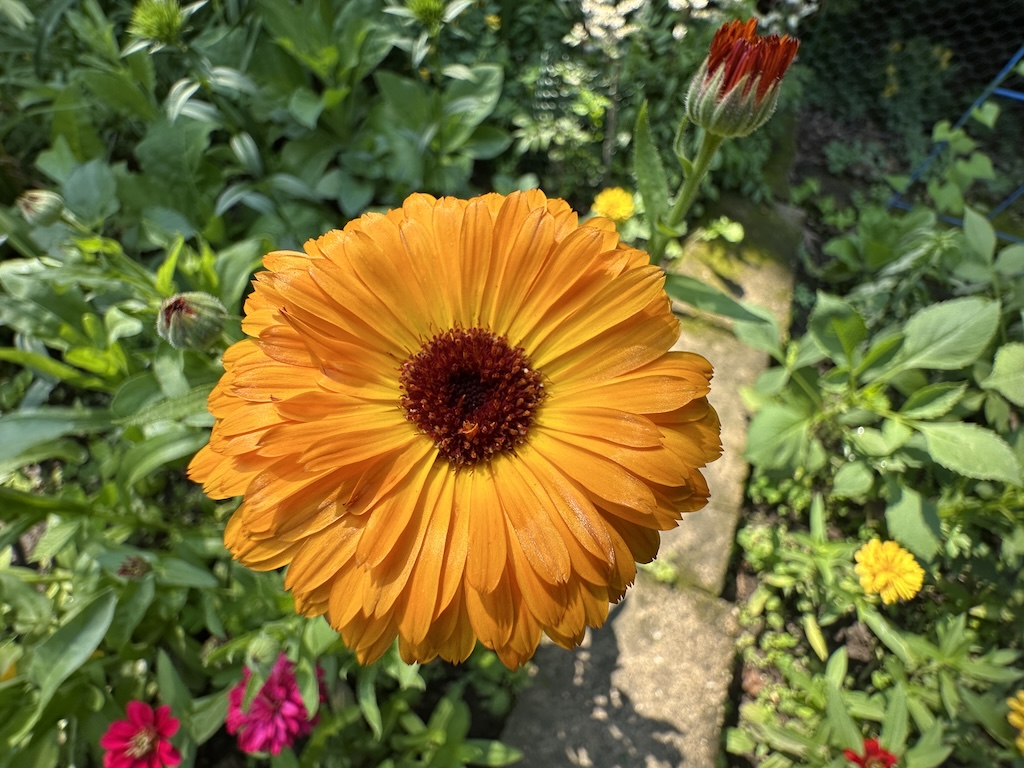
The other cultivar I grew is ‘Orange Flash’:
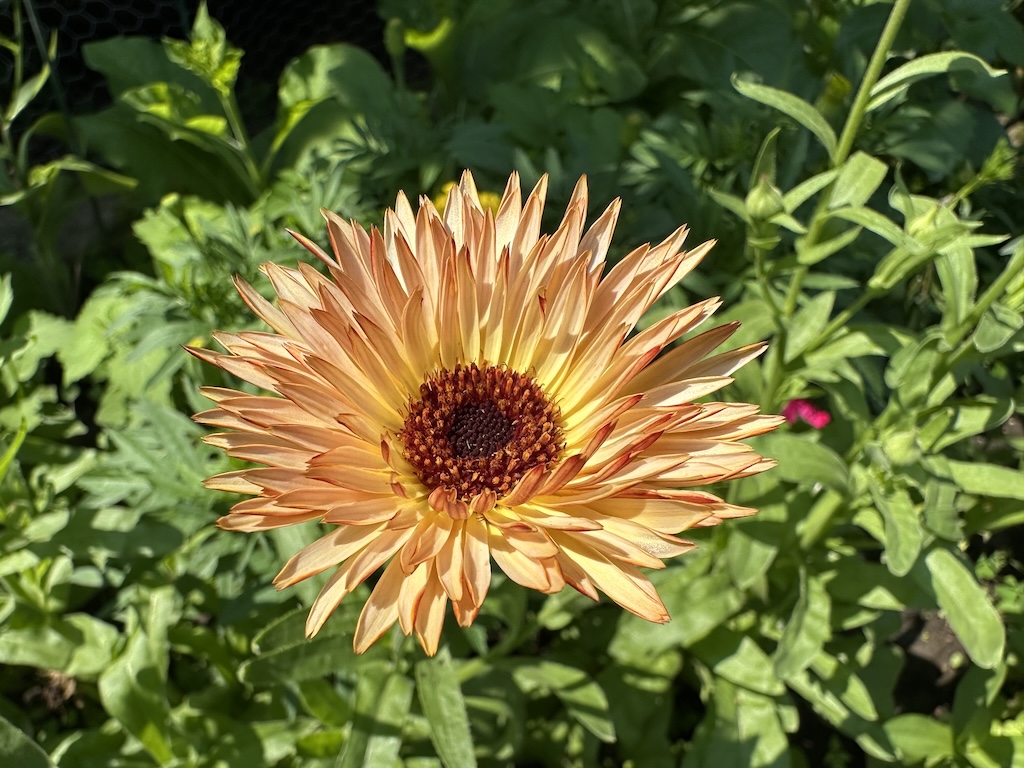
‘Orange Flash’ grows 18-24 inches tall with petals that have shades of peach, cream and bronze emerging from a bronze center.
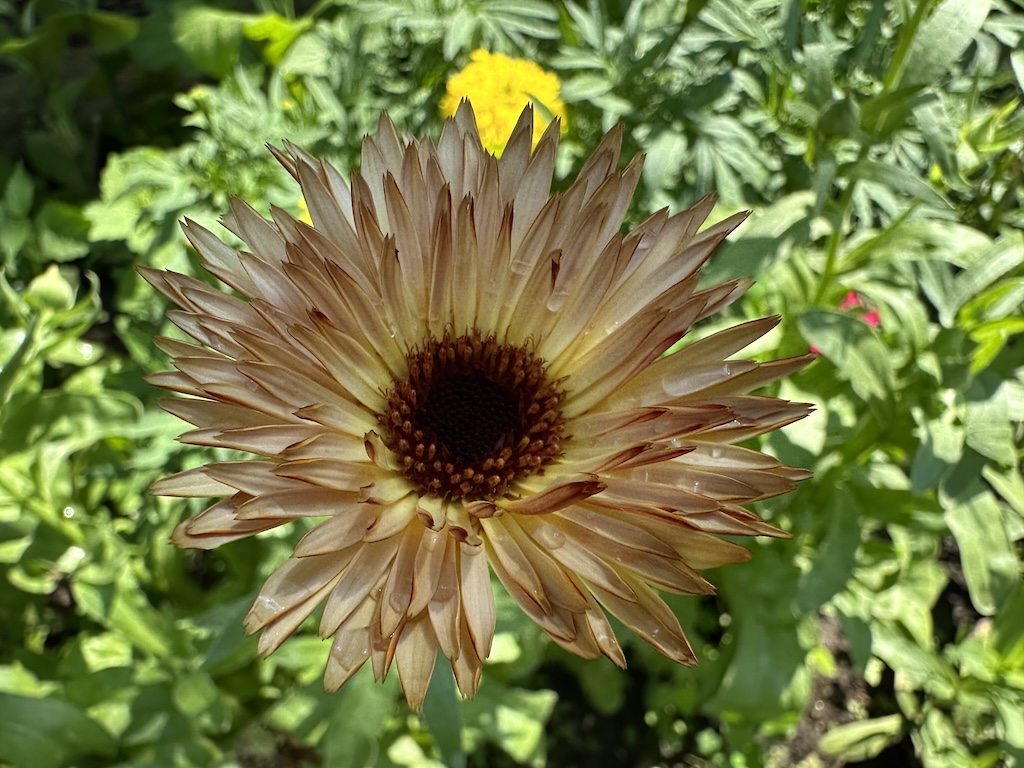
While calendulas prefer full sun, they can also handle part-sun, so I hoped to use them to add some color to the shadier areas of my flowerbeds. I cut the plants back in early summer so they would be bushier.
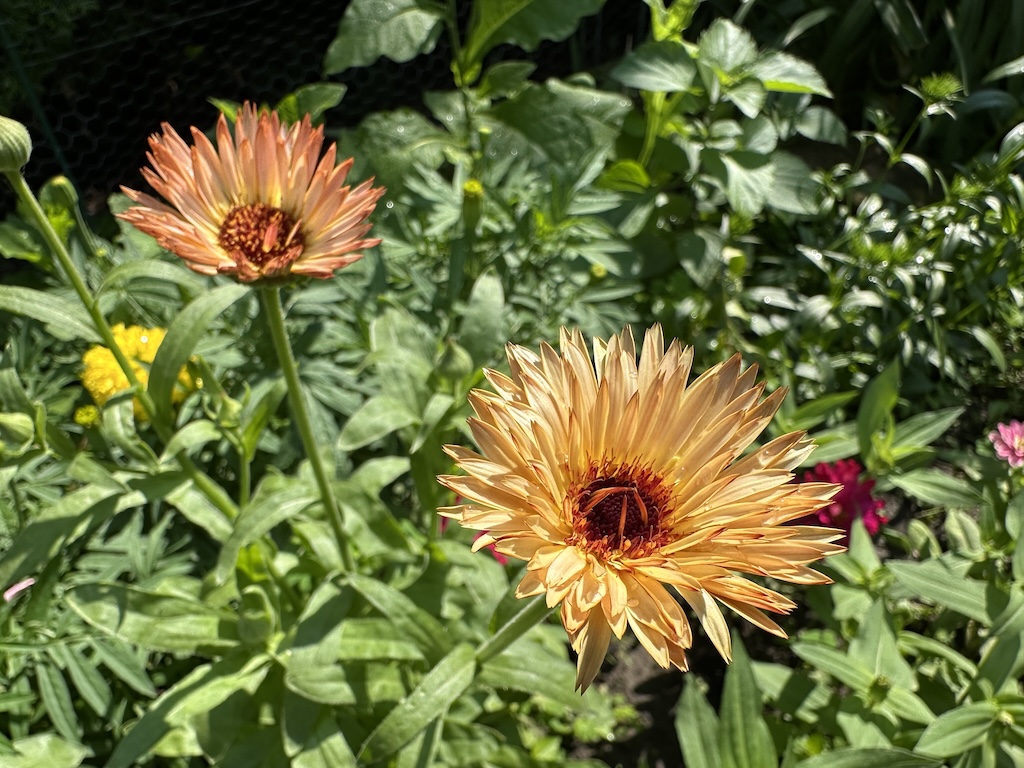
Because I have limited space in my city lot, I’m tempted to give up on calendulas for next year. What would take their spot? Dahlia ‘Figaro’. Those plants started blooming in June and haven’t stopped. And pollinators love them!
